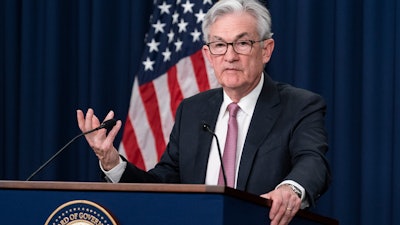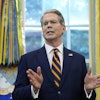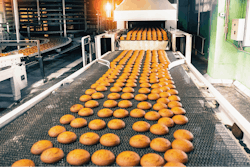
WASHINGTON (AP) — Chair Jerome Powell on Tuesday underscored the Federal Reserve's determination to keep raising interest rates until there is clear evidence inflation is steadily falling — a high-stakes effort that carries the risk of causing an eventual recession.
The Fed's increases in its benchmark short-term rate typically lead, in turn, to higher borrowing costs for consumers and businesses, including for mortgages, auto loans and credit cards.
“What we need to see is inflation coming down in a clear and convincing way,” Powell said in remarks to a Wall Street Journal conference. “And we’re going to keep pushing until we see that.”
The Fed chair, who was confirmed last week by the Senate to a second four-year term, suggested that the Fed would consider raising rates even faster if price increases fail to moderate.
“What we need to see,” Powell said, “is clear and convincing evidence that inflation pressures are abating and inflation is coming down. And if we don’t see that, then we’ll have to consider moving more aggressively. If we do see that, then we can consider moving to a slower pace.”
And he said the Fed “wouldn’t hesitate” to push its benchmark rate to a point that would slow the economy if needed. While it is unclear what level that might be, Fed officials peg it at about 2.5% to 3%, roughly triple its current setting.
Powell’s remarks Tuesday followed other statements he has made that have indicated the Fed is implementing a series of rate hikes that could amount to the fastest tightening of credit in more than 30 years.
At a meeting earlier this month, the Fed raised its key rate by a half-point — double the usual increase — for the first time since 2000, to a range of 0.75% to 1%. And at a news conference after the meeting, Powell suggested that Fed officials would continue to raise its rate by a half-point, at both its June and July meetings.
The Fed chair appeared unconcerned Tuesday about the stock market’s sharp decline over the past six weeks. Those declines partly reflect concern on Wall Street that the Fed’s efforts to rein in inflation, which has reached 40-year highs, could weaken the economy so much as to trigger a recession. Stock prices also often fall as interest rates rise, increasing the return from bonds.
When asked if the Fed’s rate hikes could disrupt financial markets, without necessarily bringing down inflation, Powell responded, “I don’t see that happening.”
The interest rate, or yield, on the two-year Treasury note has risen steadily since the start of the year, which Powell pointed to as a sign that Wall Street expects the Fed to keep tightening credit. Such expectations should help slow borrowing and spending, and cool the economy.
“It’s been good to see financial markets reacting in advance” of upcoming rate hikes, Powell said. “That’s what we need.”
The S&P 500, a broad market index, has tumbled about 15% from its January peak. That’s just short of the 20% decline that marks a bear market. Yet many economists say Powell is unlikely to let market disruptions change the Fed’s path, given that inflation has soared to such high levels and is causing hardships for millions of households.
“The markets are orderly, they’re functioning,” Powell said. “There are some volatile days and volatile markets, but so far, I see us as getting through this fairly well.”
The Fed chair also suggested, more explicitly than before, that the central bank’s efforts to bring down inflation may result in some people losing their jobs, pushing up the unemployment rate.
Powell said the Fed’s goal was to cool off consumer and business spending and bring it more into line with the restrained supply of goods and workers. That, in turn, should tame inflation.
The Fed hopes to accomplish that, Powell said, while keeping the job market strong. But that doesn’t mean the unemployment rate would necessarily stay at 3.6%, where it is now, he said.
“You’d still have quite a strong labor market if unemployment were to move up a few ticks,” he said.






















